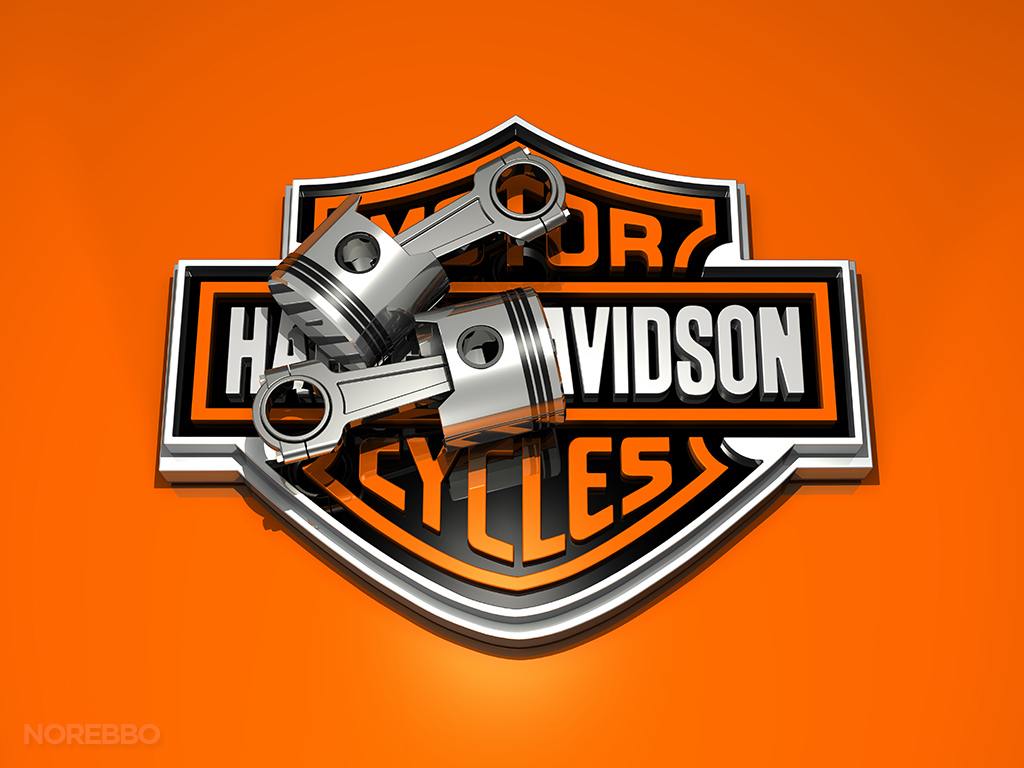I’ve been selling my 3-D renderings and illustrations online since 2006. I’ve experimented with a multitude of different ways of doing it, and I feel like I’ve got a pretty good sense of what works and what doesn’t. Follow along as I teach you how to sell digital art – the way I do it.
For those of you who want quick answers, these are the only two steps you’ll need to take to sell your digital artwork online:
- Create a blog
- Create a YouTube channel
And then choose any of the following:
That’s all there is to it. There’s a lot you need to know about these methods though, so keep reading and I’ll explain only what you need to know (based on my experience).
First things first, you need to sign up for either Shopify or Gumroad
No matter which method you choose for selling your digital artwork online (blog or YouTube channel), you’re going to need a place to send people to when they’re ready to make the purchase.
I use both Shopify and Gumroad to host my digital files that people can purchase and download. They both handle the process of selling digital art somewhat differently, so I’ll try to break it down as simply as I can:
Why I like Shopify
Shopify is an incredibly easy to use yet incredibly robust e-commerce platform for the masses. Even if you know absolutely nothing about setting up a website, you can have your own Shopify e-commerce store set up and running within minutes of creating an account.
Note that Shopify was built from the ground up to offer people a place to sell their own physical products. However, it’s a fully capable solution for selling digital products thanks to the Digital Downloads app.
Shopify is the the most robust solution for digital artists looking to sell their own artwork online. Set up a store and start selling in just minutes!
I’ve been using Shopify with the Digital Downloads plugin for years to sell my aircraft templates, and it’s worked flawlessly for me.
Why I like Gumroad
Unlike Shopify, Gumroad was built from the ground up as an extremely easy and intuitive solution for selling digital products.
The main advantage that Gumroad has over Shopify is that it can integrate with your existing blog seamlessly. All you need to do is upload your digital art to Gumroad, and then put a link to that product anywhere on your blog. When anyone clicks on that link, a pop-up will appear showing the details of the item. Not only that, a purchase can be made from that same pop-up as well.
To give you an example of what this looks like, click here to see an example of one of my digital products that I’m selling on Gumroad. You’ll notice how clean and simple the pop-up is, and it feels like a completely integrated experience. And believe me – you’ll have a higher chance of selling your digital art if you can make the purchase process as simple as possible.
Gumroad is what I use to sell my digital art directly on my own website. Integration is seamless and quick. No coding involved!
Comparing Gumroad vs Shopify
I’d highly suggest checking out each of these tools and poking around for a while so that you can figure out which is the better solution for you. To make things easier though, here is a simple chart comparing both solutions:
|
For power sellers
|
Quick and easy solution
|
|
Pros:
|
Pros:
|
|
Cons:
|
Cons:
|
|
$29/mo
|
$10/mo
|
- Sell digital artwork
- Sell physical products (such as prints of your digital art)
- It's a fully-functional e-commerce platform that looks very professional
- Won't integrate with your existing website (it's a stand-alone platform)
- It's 3x the cost of Gumroad
- Sell digital artwork
- Sell physical products (such as prints of your digital art)
- Allows buyers to make purchases directly on your website
- A low cost solution for selling digital artwork
- Limited shopping cart functionality (for multi-item purchases)
- Lacks upsell functionality
As you can see, there’s no reason why you couldn’t use both. I do, and it’s been working flawlessly for me for years.
OK. Now that you’ve got a place to actually sell your digital art, you’ll need to choose a method to get people to not only see it, but to want it as well.
How to sell digital art with your own website
Of all the methods to sell your own digital art, the one that I recommend the most is to create a website of your own and sell everything from there. The reasons for this are as follows:
- You need a place on the Internet to call “home”. A place where you are safe from aggressive algorithm changes and sketchy partnerships with other companies.
- Relying on social media or stock photo agencies is dangerous. Again, they can (and do) change without warning, and you could lose everything overnight. Just ask anybody who built their entire business on MySpace back in the late 2000s.
- With your own website, you’re the boss. You control how the how your artwork is displayed. More importantly, you control the price. You don’t have to pay any commissions and you’ll get to keep 100% of the profits.
I’ve been selling my digital artwork here on Norebbo.com since 2009. Back then, it was a stock photo e-commerce store filled with nothing but my own 3-D renderings. It did fairly well, but I eventually switched over to a blog format so that I could create different kinds of content and build a better relationship with my audience.
Building a blog is my number one recommended choice for anyone who comes to me to asking how to sell digital art.
How to set up a blog to sell your digital art
First of all, let me just say this: it’s a lot easier than you might think. I’ve been blogging since 2005, so it’s easy and comfortable for me. However, I do understand that it can seem intimidating for anyone who’s never done it before. Don’t worry. It’s extremely easy and these are the exact steps that you need to take to put yourself on the path to success:
1. Create your blog using WP Engine
I recommend using WP Engine as a blog host for several reasons:
- First of all, they’re one of the most reputable names in WordPress hosting. I use them for several of my other projects, end it’s been a breeze so far.
- It’s extremely easy to get things set up, and with just a few clicks of a button you’ll have a fully functioning blog that you’ll be able to grow into and eventually profit from.
- They offer an extremely generous 3-month free trial, which is perfect for dipping your toes in and trying it out before you buy.
Web hosting doesn't have to be complicated! WP Engine is what I recommend to beginners who have no experience building websites.
2. Start creating content
Creating content is the most important part when it comes to figuring out how to sell digital art. I’d assume that you’ve got a large portfolio of digital artwork already, so put all that stuff aside for a moment and just focus on creating blog posts that describes your work.
Don’t worry about picking the right theme for your blog at first. Heck – don’t even worry about the logo. That kind of stuff isn’t important in the beginning. You need to be creating content instead!
However, it’s important not to make the same mistakes that I did in the very beginning. More specifically:
- You need to write about things that people are actually searching for. Back when I first started, I just wrote anything that was on my mind, not paying any attention to current trends or specific trends that people search for in Google every day.
- Finding out what people are searching for is quite easy actually. Just go over to Google, and start typing in the title of a blog post you’re thinking about writing. Google will auto-populate some suggestions for you below the search box, and those things are what you need to focus on. Why? Because those are the exact things that people are searching for in Google today.
So, for example: had I known how this method worked back in 2014, I never would have created an entire set of 3-D renderings featuring the Hello Kitty logo. Why? Because now, knowing what I know now about keyword research, I know that absolutely nobody is searching for 3-D Hello Kitty renderings. I was such a doofus.
3. Learn to pivot when necessary
The realization that the kinds of digital art that I was creating had no commercial value was soul crushing. However, it was one of the most important lessons I ever learned about selling digital art.
You’ll stand no chance of success if you’re creating digital artwork that nobody wants. Sorry. That’s just the way it goes.
Do note that it isn’t the end of the world if you realize that your digital artwork isn’t likely to sell. First of all, you need to pat yourself on the back for understanding this so early in your blogging career. It took many years of spinning my wheels for me to come to that realization, and I’d be much farther ahead today if I knew anything about keyword research when I got started.
If you’re not producing the kinds of things that people are actually searching for, you’re going to have to pivot. For me, that meant moving away from silly things like 3-D Hello Kitty renderings and moving to more commercially viable digital art such as 3-D renderings of Harley Davidson logos.

4. Keep writing. And then write some more.
To have the most success possible, you’re going to need a lot of content. You need to get people excited about your work, and you need to stay active.
Building an audience has been a fantastic way for me to build my business, and I did that by years and years of writing blog posts. People eventually got to know me, and they started looking forward to whatever I was going to publish next.
Do note that it can be a total grind though. You need to be in this for the long-haul, because it’s likely to take you several years of working hard to see any real success.
5. Start pointing people to your Shopify and or Gumroad stores
As you keep creating content, make sure you’re pointing people to the place where they can actually buy your artwork. Some of the things that I’ve worked for me is:
- Buttons work better than text links. For example, if you look at my McDonnell Douglas DC-9-30 post, you can see that I put a big button underneath the illustrations to take people over to my Shopify store. I used to use text links, but those didn’t convert as well.
- Don’t oversell. Nobody likes a pushy salesman, so just write naturally and insert links to your digital products wherever it feels right.
How to sell your digital art with a YouTube channel
If the thought of writing hundreds of blog posts about your digital art makes you cringe, don’t worry. Another thing that works very well for me is YouTube.
I have several art and design related YouTube channels (in addition to the Norebbo YouTube channel), and I’m finding that it’s working just as well for me as my blog when it comes to selling digital art. Video is far more engaging than a blog is, so it’s a very good place for my audience to get to know me and my artwork.
In regards to actually selling my art via YouTube, here are the things that I have found that I’ve been working for me:
- Demo videos of me actually creating the artwork seems to be the most popular type of content. My audience loves seeing how I create the things that I do!
- I usually start and end the video verbally mentioning that the link to purchase the artwork is in the description below. I make no mention of it in the middle of the video, and it seems to be working well. Again, it’s important not to be overly pushy!
- Be aware that YouTube’s goal is to keep people on YouTube. Therefore, if you stuff your description box with tons of links to external websites, you may or may not be penalized by that. If the YouTube algorithm determines that people are leaving YouTube frequently after watching your videos, they may be less inclined to recommend them to others.
There has been a lot of speculation about that last bullet point, and from my experience, I tend to believe that it’s true. Videos of mine that have a lot of links in the description don’t seem to do as well. Of course it could just be a coincidence, but I fully understand the reasoning if that’s the case.
Is it possible to sell digital artwork on stock photography websites?
Of course. I’ve made lots of money selling my digital art on stock photo agencies such as Dreamstime, 123 RF, and Depositphotos. That’s actually how the Norebbo brand got started way back in 2006.
The nice thing about selling your digital art via stock photo agencies is that you don’t have to worry about creating a website (or YouTube channel) and building traffic to it. The major stock photo agencies get tons of traffic, and they are very well-established as places to go to for not only photos but high-quality digital art as well.
That being said, you need to know that it isn’t 2006 anymore. The stock photography market is incredibly oversaturated, and it’s extremely difficult to make any significant money selling digital art that way. You could certainly make some extra cash doing it if you focus enough time and effort, but it would be fractions of what you could earn by building in promoting your own website with WP Engine instead.
As I said before: building a site with WP engine, and leveraging both Shopify and Gumroad is how I sell digital art. The potential earnings are unlimited that way, and you’ll likely be able to replace your the income from your day job if you put enough time and effort into it.
Setting realistic expectations about selling your digital artwork
Are you getting excited yet? I hope so! Selling my digital art online has been a life-changing experience for me (it has allowed me to leave my 9-5 corporate job), and it’s exciting to think that it’s only going to get better as time goes on.
However – you have to understand that this is a very long process. It’s going to take several years of hard work before you get any traction, so you need to be 100% committed to this. Most people will try for two weeks and then quit out of frustration because they think that it’s too much work for the effort involved.
Just stick with it. More importantly, have fun! You have an opportunity here to turn your love of digital art into a full-time profession, so roll up your sleeves and get at it…








